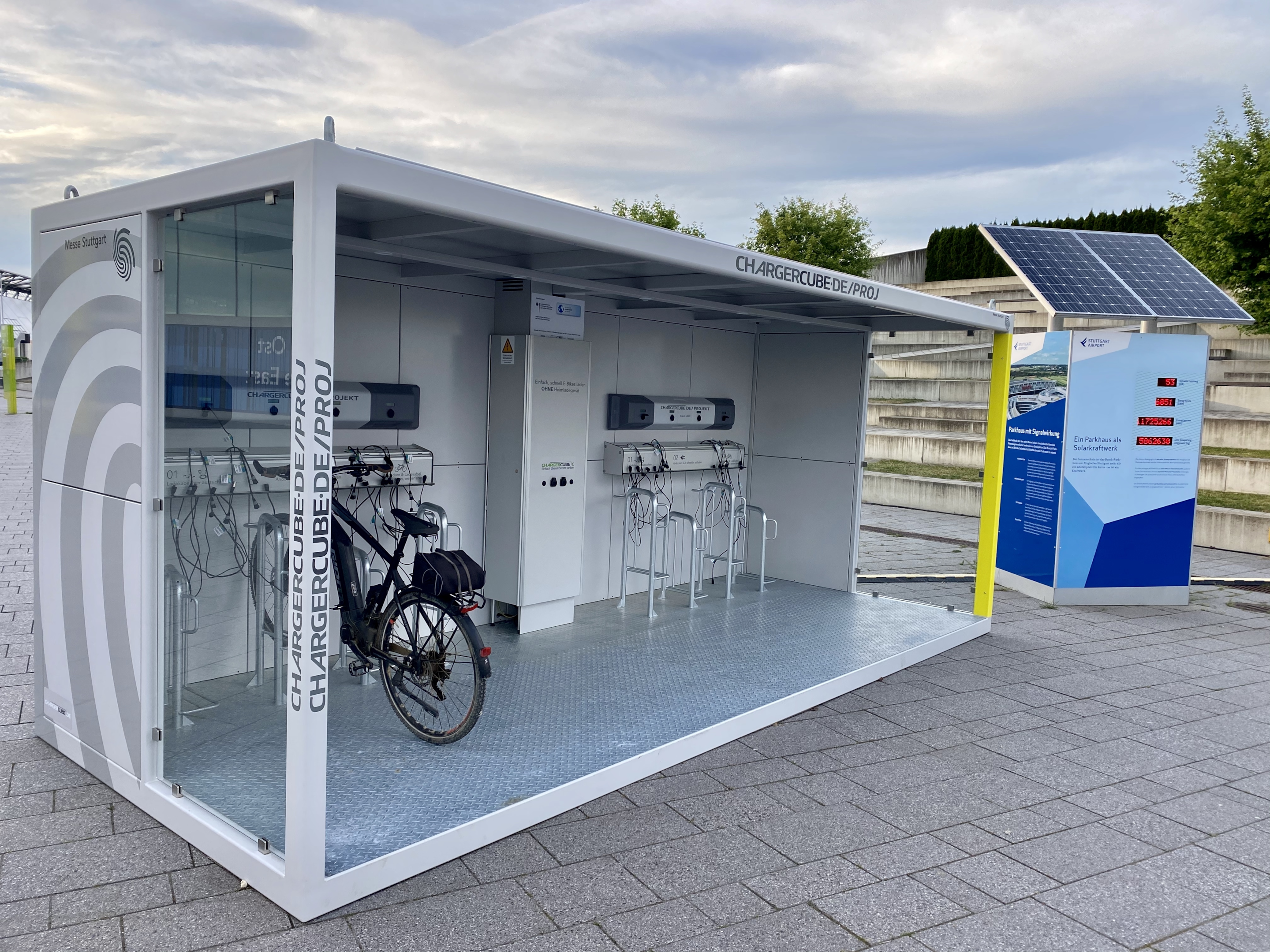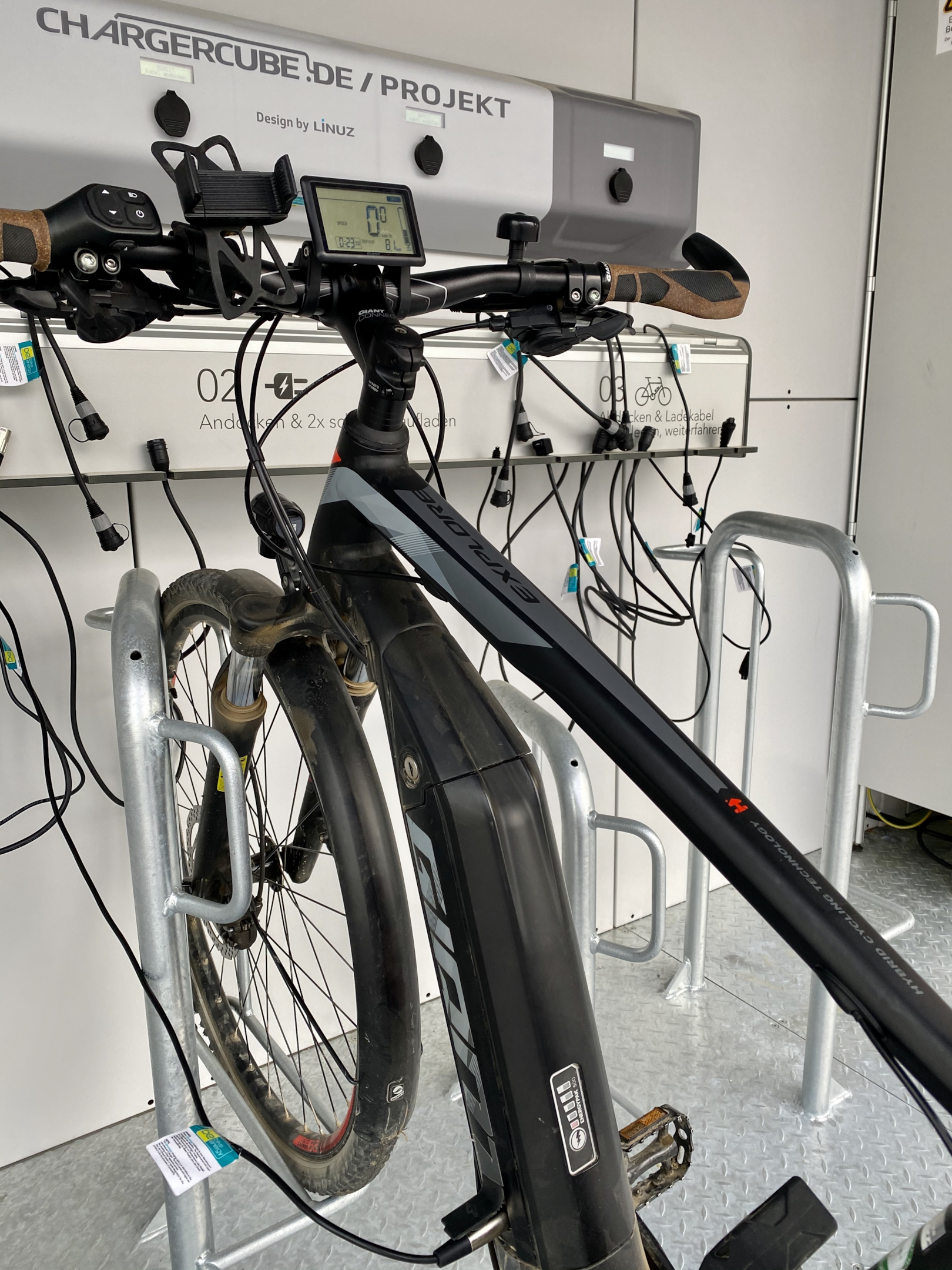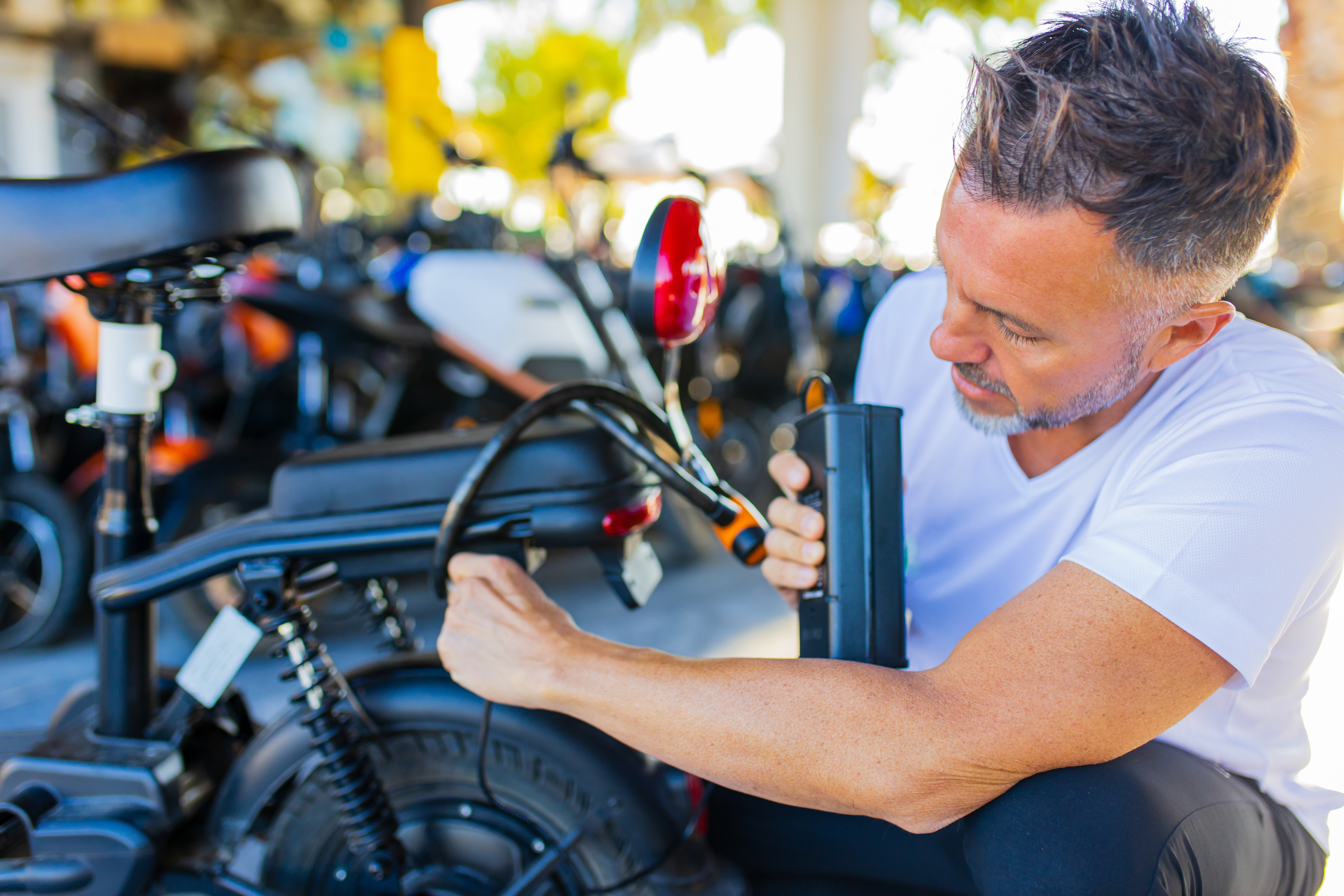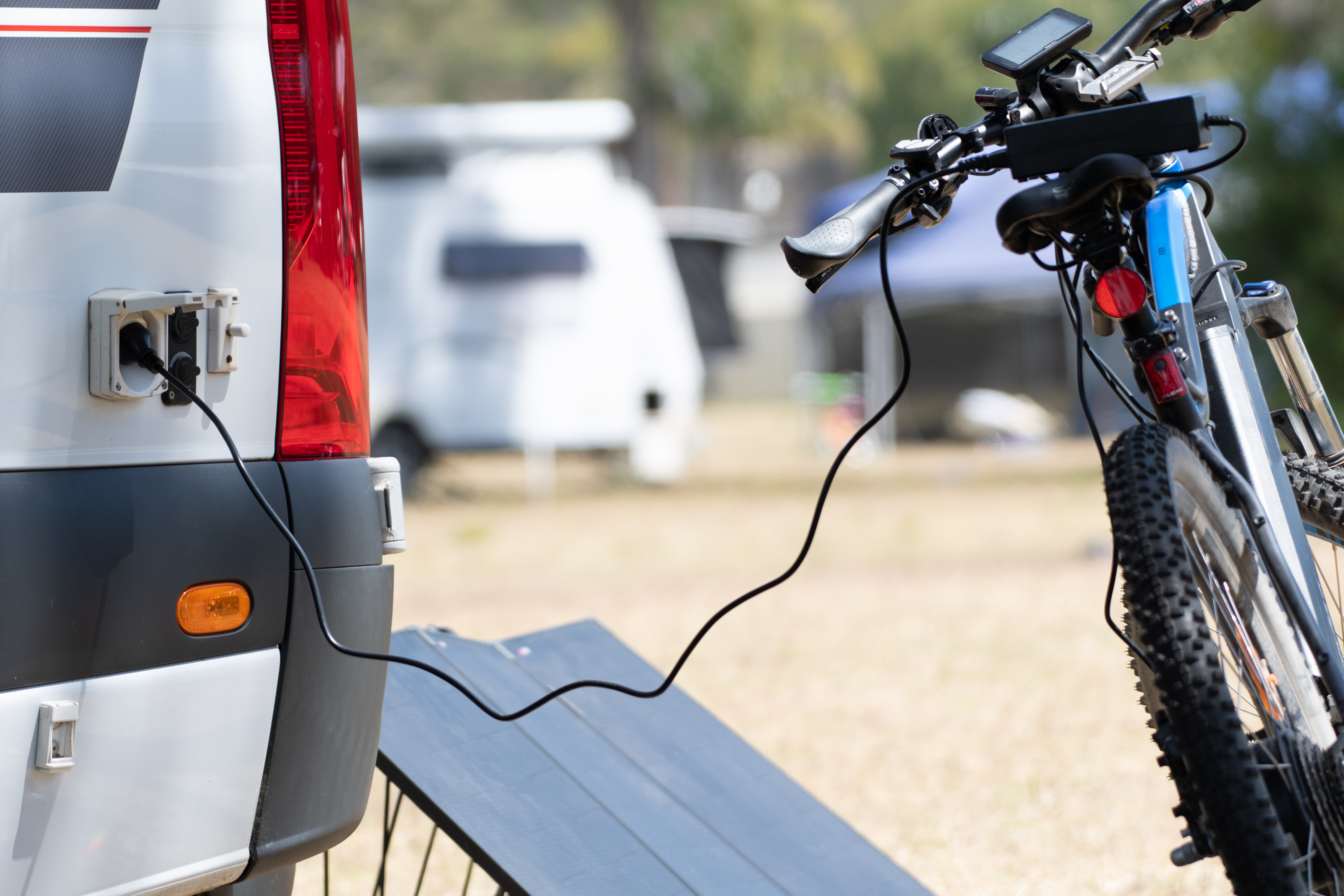shop
learn
customer care
The Ultimate Guide to safe Ebike Charging
June 30, 2023 9 min read

Choosing the Right Charger & Charging Tips
Imagine the freedom of effortlessly gliding through city streets on your electric bike, knowing that your battery is fully charged and ready to take you wherever your heart desires. Now imagine the disappointment of realizing that your eBike battery is drained halfway through your ride - all because you didn’t have the right charger or didn’t charge it properly.
To avoid such scenarios and ensure a smooth, uninterrupted ride, it’s essential to understand the intricacies of ebike charging.
In this comprehensive guide, we’ll delve into the world of eBike batteries, chargers, and charging practices, providing you with all the knowledge you need to keep your electric bike running efficiently and maximize your battery life. Let’s get started!
Short Summary
-
Understanding ebike charging is essential for efficient and safe operation.
-
It is important to choose the right charger, ensure voltage compatibility, and follow recommended procedures such as monitoring the charging process to prevent overcharging.
-
Regular maintenance and recharging protocols are necessary for optimal battery care and extending its lifespan.
Understanding E-Bike Charging

Charging your electric bike may seem like a simple task, but there’s more to it than just plugging it in and waiting for the battery to charge. To prolong the life of your eBike battery and ensure optimal performance, it’s crucial to understand how batteries and chargers work together.
Selecting the right charger and knowing how to properly charge your battery will not only save you time and effort, but also keep your bike running smoothly and safely.
Before diving into the specifics of eBike batteries and chargers, it’s essential to have a basic understanding of battery types, voltage requirements, and compatibility. These factors play a vital role in determining how efficiently and safely your electric bike charges, so let’s explore them in more detail.
Types of eBike Batteries
There are three main types of eBike batteries: lead-acid, nickel-metal hydride (NiMH) and lithium-ion (Li-ion). Each type has its own set of advantages and disadvantages, and knowing the differences between them will help you make an informed decision when choosing a battery for your electric bike.
Lead-acid batteries are the oldest and most economical option, but they come with a trade-off: they’re the heaviest and least efficient of the three types. NiMH batteries are lighter and more efficient than lead-acid batteries, but they come with a higher price tag.
Li-ion batteries are the lightest and most efficient option, making them a popular choice among eBike enthusiasts. However, they’re also the most expensive.
No matter which battery type you choose, it’s crucial to ensure compatibility with your e bike battery chargers, including fast chargers, to keep your battery in top condition.
Battery Voltage and Compatibility
Battery voltage plays a crucial role in determining your electric bike’s power and performance. Most eBikes have a voltage range between 36v and 48v, so it’s important to choose a battery with the right voltage for your specific eBike.
Compatibility between your battery and charger is also vital to ensure safe and efficient charging.
To verify compatibility, you’ll need to check the voltage range of your ebike and the size and shape of the battery. When selecting a charger, make sure that the charger’s connection point matches your battery. Using an incompatible charger can damage your battery and even pose a fire hazard.
So always double-check compatibility before purchasing an electric bike charger for your eBike.
Choosing the Right Charger for Your Electric Bike

Choosing the right charger for your electric bike is crucial for maintaining your battery’s health and ensuring a safe, enjoyable ride. Using the wrong charger can lead to battery damage, reduced performance, and even fire hazards.
To avoid these issues, it’s essential to select a charger that is compatible with your eBike’s battery voltage and connection point.
Cap Rouge chargers offer a range of features to suit your ebike charging needs, including fast charging and a compact design. When looking for a replacement or additional charger for your electric bike, always make sure to choose one with the correct voltage and connection compatibility to keep your battery in optimal condition.
Charger Voltage and Connection Compatibility
Ensuring that your charger’s voltage matches your ebicycle battery’s voltage is crucial for safe and efficient charging. Using a charger with the wrong voltage can damage your battery and decrease its lifespan. In some cases, it could even render the battery unusable.
To avoid these issues, always verify that the charger’s voltage corresponds to your bicycles battery’s voltage.
Connection compatibility is another essential factor to consider when selecting a charger for your eBike.
Check that the charger’s connection point is compatible with your battery to ensure a secure connection during the charging process.
Failing to do so could result in a poor connection, leading to inefficient charging and potential damage to your battery.
Australian Power Point Requirements
If you’re an eBike owner in Australia, it’s important to ensure that the charger you choose is compatible with Australian power points.
While all electric bike battery chargers are certified to Australian standards, it’s still crucial to check that the charger you select can be plugged into a local power point.
When purchasing a charger for your electric bike online, make sure to verify its compatibility with Australian power points.
By doing so, you’ll avoid potential issues with charging your eBike and ensure that your battery remains in top condition.
E Bike Charging Time and Efficiency

Charging your electric bicycle battery doesn’t have to be a time-consuming process.
By understanding the factors that affect charging time and following some simple tips, you can optimize your charging efficiency and get back on the road as quickly as possible.
The time it takes to fully charge your eBike battery can vary depending on several factors, including the battery’s capacity, the charger’s output power, and the temperature.
Generally, charging times can range from 2.5 to 6 hours. To calculate your battery’s charging duration, simply divide the battery’s amp hours by the charger’s amps.
Factors Affecting Charging Time
Several factors can influence the charging time of your electric bicycle battery. Battery capacity, or the amount of energy the battery can store, is a primary factor.
Larger capacity batteries will take longer to charge than smaller ones. On the other hand, the charger’s output power also plays a significant role - the higher the output power, the faster the charging time.
Temperature is another factor that can impact your eBike battery’s charging time. Higher temperatures can decrease charging time, while lower temperatures can extend it.
However, it’s important to note that extreme temperatures can also negatively affect your battery’s health and should be avoided.
Tips for Efficient Charging

Efficient charging not only saves time, but also helps prolong your eBike battery’s life. To optimize your charging efficiency, consider using a fast charger that’s compatible with your battery type.
Additionally, always charge your battery in optimal conditions, such as indoors at a temperature ranging from 50 °F to 77 °F (10 °C to 25 °C).
Another essential tip for efficient charging is to monitor the charging progress and prevent overcharging. Avoid leaving your battery on charge overnight, as this can lead to overcharging and damage your battery.
Instead, keep an eye on the charging process and disconnect the charger once your battery reaches its recommended maximum capacity.
Electric Bike Battery Care and Maintenance

Proper care and maintenance of your eBike battery are essential for maximizing its lifespan and ensuring a safe, enjoyable ride.
By following best practices for battery care and maintenance, you can prevent potential issues such as overcharging, overheating, and damage to the battery.
Adhering to regular maintenance and recharging protocols not only keeps your battery in top condition, but also prevents potential hazards associated with improper charging.
In this section, we’ll explore some essential tips for battery care and maintenance, including how to avoid overcharging and maintain optimal charging conditions.
Avoiding Overcharging
Overcharging your eBike battery can lead to a variety of issues, including reduced performance, decreased capacity, and even the risk of a fire.
To prevent overcharging, always monitor your battery’s charging progress and disconnect the charger when it reaches the recommended maximum capacity.
One effective way to avoid overcharging is to use a fast charger that’s compatible with your battery type. These chargers are designed to provide optimal charging efficiency without overcharging the battery.
By using a fast charger and keeping an eye on the charging process, you can ensure that your battery remains in top condition and lasts as long as possible.
Ideal Charging Conditions
Charging your eBike battery under optimal conditions is crucial for maintaining its health and prolonging its lifespan.
The ideal temperature for charging a lithium-ion battery is between 50 °F and 77 °F (10 °C to 25 °C).
Charging your battery in extremely hot or cold temperatures can negatively affect its performance and life.
In addition to maintaining the proper temperature, it’s also important to wait at least 30 minutes after riding before charging your battery.
This allows the battery to cool down and prevents overheating during the charging process.
By adhering to these ideal charging conditions, you’ll ensure that your e Bike battery remains in top shape and lasts for many rides to come.
Maximizing Your Electric Bike's Battery Life

By following best practices for battery care and maintenance, you can maximize your electric bike’s battery life and enjoy uninterrupted rides.
Understanding the concept of charge cycles, as well as regular maintenance and recharging, can help you prolong your battery’s lifespan and improve your eBike’s performance.
In this section, we’ll share valuable tips and best practices for maximizing your e-Bike battery’s life, including understanding charge cycles and adhering to regular maintenance and recharging protocols.
Understanding Charge Cycles
A charge cycle is the procedure of replenishing the battery’s energy level. It starts from 0% and goes up to 100% capacity.
The number of charge cycles a battery can go through before it begins to lose capacity or fail is directly related to its lifespan.
The more charge cycles a battery can endure, the longer its life will be.
Understanding charge cycles is crucial for preserving your e-Bike battery’s health and maximizing its life.
By monitoring your battery’s charge cycles and ensuring proper charging practices, you can help extend its lifespan and enjoy more rides on your electric bike.
Regular Maintenance and Recharging
Regular maintenance and recharging are essential for keeping your e-Bike battery in top condition and prolonging its life.
It’s recommended to recharge your battery after each ride, ensuring that it’s consistently at its maximum capacity.
Proper maintenance, such as cleaning the bike and inspecting the wear on tires, brake pads, chain, and drivetrain, is also crucial for the overall performance of your eBike.
In addition to regular maintenance, it’s essential to recharge your battery at least once a month, even if it hasn’t been in use. This prevents the battery from being over-charged and helps maintain its life.
By following these regular maintenance and recharging practices, you’ll keep your e-Bike battery in optimal condition and enjoy a safe, smooth ride every time.
Summary
In conclusion, proper ebike charging and battery care are essential for maximizing your eBike’s performance and ensuring a safe, enjoyable ride.
By understanding the basics of eBike batteries and chargers, selecting the right charger for your eBike, and following best practices for charging and maintenance, you can prolong your battery’s life and keep your electric bike running smoothly for years to come.
With the knowledge you’ve gained from this guide, you’re now equipped to confidently charge and maintain your e-Bike battery, ensuring that it remains in top condition and ready for your next adventure.
So go ahead, power up your eBike, and ride into the sunset knowing that your battery is fully charged and ready to take you wherever the road may lead.
Frequently Asked Questions
How do you charge an ebike?
Charging your electric bike is easy and straightforward - all you need to do is remove the battery pack from the e-bike, turn off the battery switch, connect the charger to the battery pack, plug the charger into a mains outlet, and turn on the plug.
In no time, your electric bike will be ready for your next ride!
Do electric bikes charge when you pedal?
No, electric bikes usually do not charge when you pedal. The batteries need to be recharged by a power outlet.
While there are some models that allow charging while pedalling, it is often not an effective way to keep the battery powered.
Should I leave my e-bike battery plugged in all the time?
Given the above advice, it is generally recommended not to leave your e-bike battery plugged in all the time. Doing so can cause unnecessary strain on the battery, leading to decreased capacity.
Instead, check the charge levels of your battery monthly and only partly recharge when necessary.
Can I ride my ebike while charging?
It is possible to ride an ebike while charging, however it is not very efficient and can vary depending on the model.
While some models have the feature of charging while pedaling, others require plugging into a power outlet for charging.
It is important to review the product details before purchasing an ebike to understand the best approach for charging.
How do I choose the right charger for my e-Bike battery?
Check your bike’s manual for the recommended wattage or amperage of its charger. Choose a charger with an appropriate plug and output cable length.
To choose the right charger for your e-Bike battery, make sure the voltage matches, the connection point is compatible, wattage or amperage matches the specifications in your manual, and that it has an appropriate plug and output cable length.
Must Read:
Leave a comment
Comments will be approved before showing up.
Subscribe
Sign up to get the latest on sales, new releases and more …
This Coming Soon screen is showing only for store admins to test. You can turn this screen off here.
